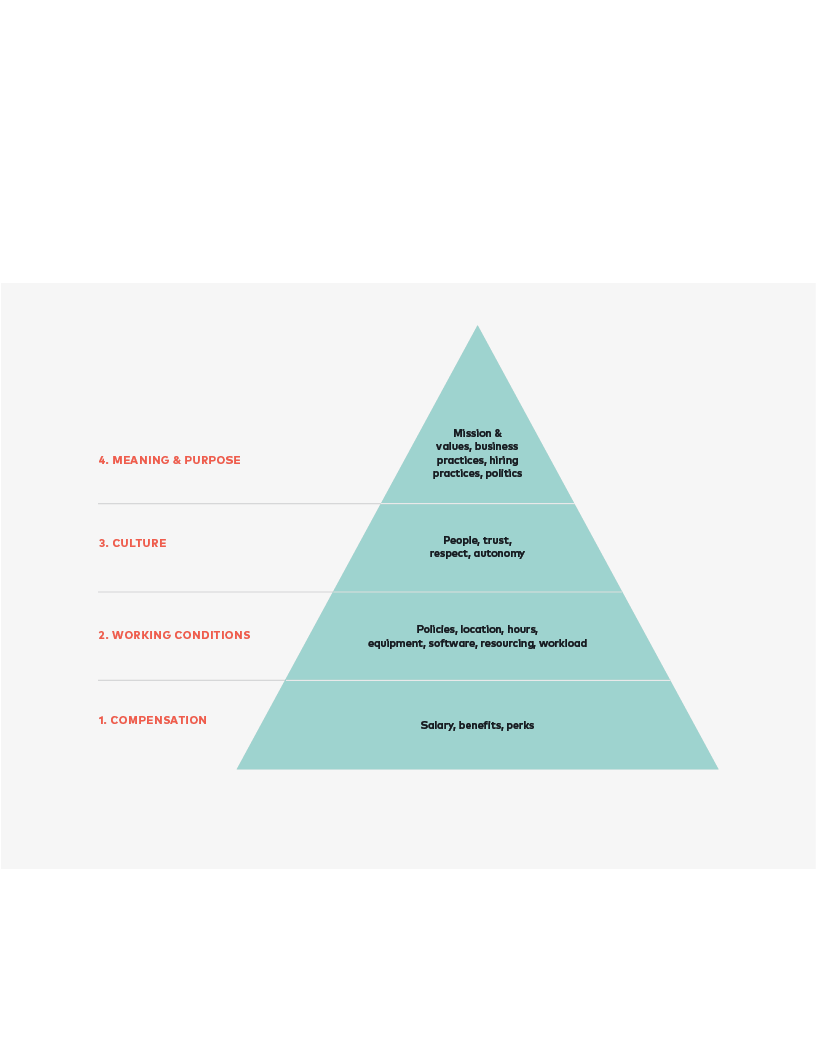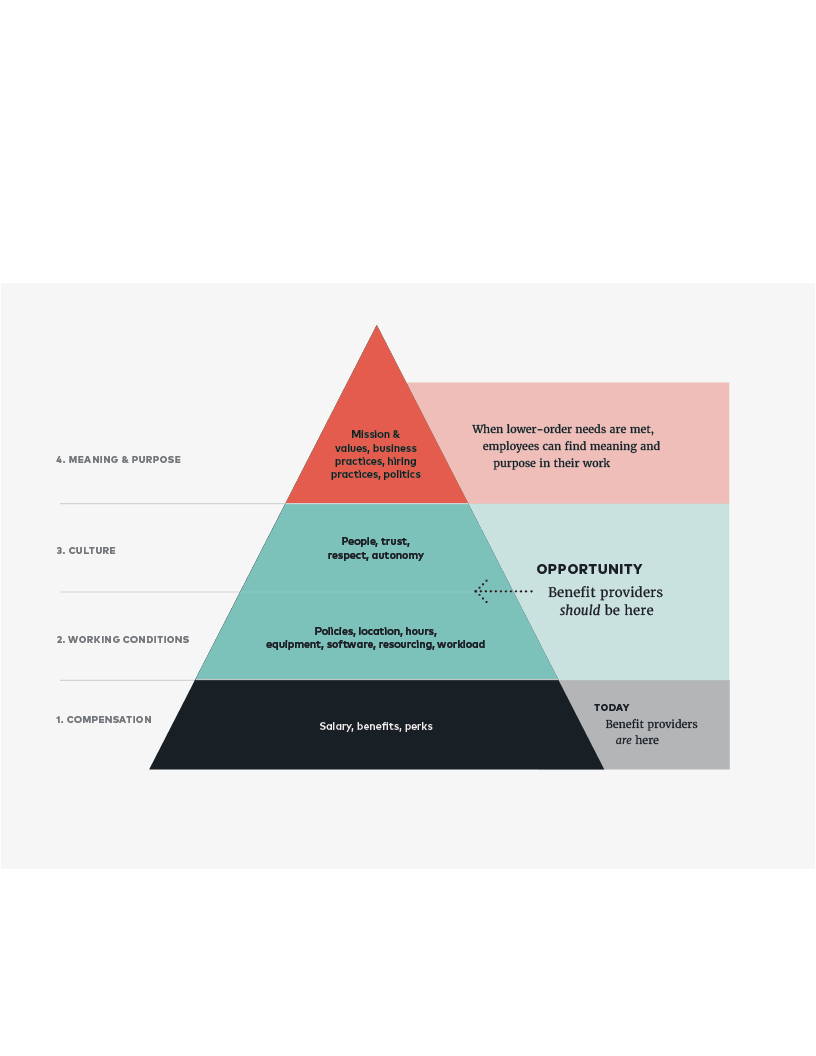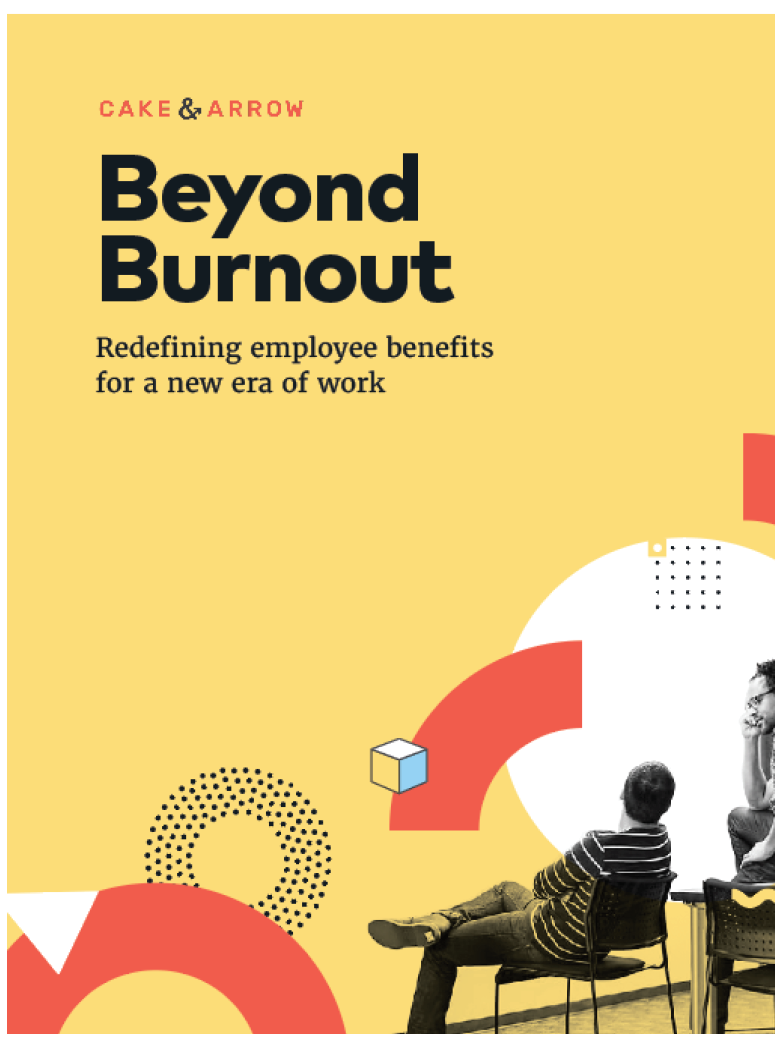
Almost three years into the pandemic and the world is still reeling from the aftermath, grappling now with its economic aftershocks. Inflation, a housing crisis, a bear market, a looming recession, and a workplace and workforce that is still very much in flux are all making a so-called “return to normal” remain evermore elusive. Even with a potential recession on the horizon and a series of notable of tech layoffs in the news, at 3.5%, the unemployment rate in September was at its lowest in 50 years, keeping the labor market tight and employers on their toes as they hustle to recruit new talent, retain employees, and respond to trends like “quiet quitting.”
Earlier this year, we published research based on a survey we conducted with employees across the United States looking to understand how their perspectives about work had shifted throughout the pandemic, what they were looking for from their employers and their jobs, now and in the future, and what a new era of work is going to look like.
Our research made it clear that while traditional forms of compensation (ie. salary and benefits) still matter to employees (of course they do–people need to pay the bills!), when it comes to work satisfaction employees are looking beyond money and benefits toward a new way of working. A way of working which prioritizes things like flexibility and autonomy, mental health, and work-life balance. In other words, a more human-centered way of working. The question we ask in our research is: how can employee benefits, and insurance specifically, evolve to support a more human-centered workplace?
To answer this question requires that we first understand what exactly is meant by “human-centered workplace” and what human needs do employees need met within a workplace setting.
The employee hierarchy of needs for a human-centered workplace
For most of us, Maslow’s hierarchy of needs requires little explanation. But here’s a quick refresher: Maslow’s hierarchy of needs, almost always depicted as a pyramid, is a model for understanding a motivational theory in psychology comprised of five levels of human needs. At the bottom of the pyramid are the most fundamental needs related to survival. These must be met before moving up the pyramid to meet higher-order needs.
Adapting this framework, we developed what we have termed the employee hierarchy of needs for a human centered workplace– a model for helping employers, benefit providers and insurance companies understand how to meet human needs within and outside the workplace, and, to quote ourselves “make work more livable and life more workable?”

1. Compensation
At the bottom of the pyramid are needs related to compensation. When these needs are met – through things like salaries, traditional benefits (insurance, 401ks, paid vacation)—employees have the stability outside of the workplace they need to be able to show up and be present at their jobs each day.
2. Working conditions
When needs related to compensation are met and employees have the stability they need outside of the workplace to be present at their jobs each day, needs related to working conditions take precedence. When these needs are fulfilled, employees are empowered and equipped with the infrastructure — the tools, resources, policies, people, and support — they need to be successful at their jobs when they show up each day.
3. Culture
When employers are meeting employee needs outside of the workplace and providing conditions within the workplace that enable people to perform the function of their jobs, employees are looking for their cultural needs to be met. When cultural needs are satisfied, the workplace is defined by a strong sense of collegiality — a spirit of collaboration, cooperation, and mutual respect among colleagues, bosses, and teams—that helps employees feel empowered, entrusted, and invigorated by their work.
4. Meaning and purpose
At the top of the pyramid is the need for employees to find meaning and purpose in their work. To meet needs related to meaning and purpose is to create the kind of workplace where every employee is able to see the impact of their work and feel like the work they do matters, within the workplace and within the world at large.
To meet needs at every tier of the hierarchy, starting at the bottom, is to create a truly human-centric workplace, one which enables employees to find true meaning and purpose—and ultimately deep satisfaction—in their work. Few employers, however, are doing so successfully.
For many employees, one tier of their needs may be addressed by their employer while others are completely ignored. For instance, some employees may earn a decent salary and have good, comprehensive employee-sponsored benefits and perks, but their workplace culture is toxic and they lack the resources and infrastructure they need to perform their jobs. For others, higher-order needs, like finding meaning and purpose in work or having a great workplace culture, may be addressed, while lower-order needs like salary and benefits are lacking. In both scenarios, employees are likely to become easily burned out and dissatisfied with their jobs.
While a handful employers may find ways to meet employee needs at every tier of the hierarchy, employee benefits have traditionally been flat–addressing the needs of employees almost exclusively at the level of compensation.

Building on the benefits foundation
So while benefit providers continue to operate almost exclusively at the level of compensation, there are opportunities to expand the definition of benefits to support employers and their employees at all levels of the hierarchy, specifically when it comes to improving culture and working conditions. Employers who are able to to attend to all of the needs of their employees — starting at the bottom and working their way up to help employees see the impact of their work and find meaning and purpose in what they do day in and day out — are more likely to retain employees and will have less difficulty recruiting talent, even amid a tight labor market. Benefit providers, including insurance companies, are perfectly positioned to support them in this effort.
Download our report where we explore four opportunities identified by our research for redefining benefits for a new, more human-centered workplace.
Report
With the end of the pandemic seemingly on the horizon, we spoke with employees about how their jobs have changed amid the pandemic, what they want from their employers and their jobs in the future, and what benefits for a new era of work might look like.
